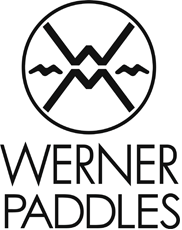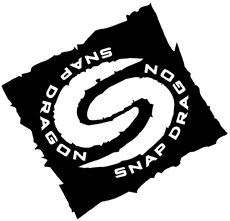Here comes the storm! Our last day at Adventure Crafters 2009. The day before we left Maryland, we decided to go for one last paddle with Robert. It had been a hot day, and building cumulus congestus clouds suggested a short window of opportunity. So we chose a nearby put-in with a really short carry and hurried to the water.No sooner had we unloaded the boats, geared up and gotten on the water than we heard a loud thunderclap. Looking back, we saw towering cumulonimbus clouds moving in, and then lightning.We immediately got off the water.We seem to have a pattern of paddling as thunderstorms move in, particularly when we’re paddling with Robert.Hmmmm….. Storm moving in. Adventure Crafters...
The "psychological tow"
The day before we were scheduled to teach a leadership and rescues class at Adventure Crafters, during which we planned to teach towing techniques, we went for a social paddle with co-owner and instructor-in-chief Robert Schrack. We were talking about classes we’ve taught and tours we’ve led when Robert introduced us to a term we didn’t realize we had been lacking: the “psychological tow.”If you’re an instructor or guide, or simply a skilled paddler who has taken less experienced people out on the water, you’ll immediately know what this means. Frequently, somebody becomes overwhelmed by conditions. They may be freaked out by waves or wind, or simply tired out by too much exertion, and they need some help to complete the planned journey.You could tow them, which would be more work for you and might be humiliating for them. But in the case of bumpy water, that might make things worse. So instead, you coach them. “Keep going,” you say. “Keep your hips loose. That’s great. Keep paddling. Nice work. It’ll be easier if you get your entire blade in the water.”You instruct them a bit, encourage them a lot, and distract them. “You know, the bar lakes along this shoreline were once small bays….” You blather on, paddling close to them and sounding relaxed, offering a mix of small talk and advice, and they manage to make it on their own.That’s the psychological tow. Having a term for it is not only satisfying, in the same way as knowing the names of birds or mushrooms. It’s practical. By placing the psychological tow in the category of tows, it reminds us to try this first before a more invasive intervention.Thanks,...
Leadership and Rescues class
Practicing T-rescues in the Chester River. On Sunday, we taught a class called Leadership and Rescues. This five-hour workshop was designed to cover the essential assisted and self rescues, including variations appropriate for specific conditions, as well as basic towing techniques. But we also wanted to help students explore each paddler’s role in avoiding an incident, and how we can prevent things from spinning out of control.Most of the time, we try to get our classes on the water as quickly as possible. After all, students sign up for a kayaking class because they want to paddle, not because they want to stand on the shore listening to us talk about paddling. But in this case, we deliberately spent the first 45 minutes on land, going over some of the basic leadership concepts we’ve learned and the safety and communication issues of which anyone paddling in a group should be aware.We promised our students that we’d post a synopsis of what we covered during that class—a virtual handout—so this blog entry will do double duty, sharing that material with them as well as with anyone else who’s interested in it.We bagan with two BCU acronyms we find especially helpful: CLAP and SAFE.CLAP stands for Communication, Line of sight, Avoidance is better than a cure, and Position of maximum effectiveness. These are considerations group leaders must address before and during and after any paddle. Communication is a huge category that includes everything from whether or not the plan and expectations are clear and agreed upon, to how the group will communicate on the water. Line of sight refers to the need to the leader to keep all members of the group in view at all times. Avoidance is better than a cure is a British way of saying that an ounce of prevention is worth a pound of cure. And Position of maximum effectiveness refers to the need for the leader to be where he or she can best control and direct the group.SAFE stands for Stop, Assess, Formulate, Execute. This helps avoid rash reactions to situations by reminding us to size up the situation and think through our options before acting.(We have to thank Jeff Allen for introducing these concepts to us. For more in-depth explanations, see the BCU coaching handbook.)After that, we talked about other essential pre-trip checklist items:– Appropriate “kit” for the conditions, which should include food and water, first-aid for yourself and your boat, spare clothing, and communication, safety and signaling equipment.– A medical talk (and how to help others feel comfortable talking about issues that you ought to know about).– Filing a float plan (and with whom).On the water, we practiced the basic T-rescue and...
taking risks, earning rewards
Robert, Kerrie and Noah Schrack. We’ve been meaning to write a little bit about our hosts, Robert and Kerrie Schrack. It’s a daunting task because they’ve been so generous and impressive on so many fronts. So this post will attempt to address what’s been missing from previous posts: some sense of who brought us here. Robert and Kerrie are the owners of Adventure Crafters in Queenstown, MD. They have a small but impressively stocked pro shop and offer classes and trips. Check out their website at www.adventurecrafters.com. Robert and Alec met during their Instructor Certification Exam at Sea Kayak Georgia, one of the premiere places for sea kayak training. They’re both natural athletes and generous spirits, so they hit it off immediately. Adventure Crafters is in its second year here in Queenstown, after a year and a half or so in Westchester, PA. Robert traded in his landscaping business to invest full-time in kayaking, with Kerrie assisting him in everything from running the shop to leading the evening paddles. It’s an impressive balancing act: work and family, time on water and time running the business, making a living and being true to their values. They’re walking all those tightropes admirably. We’ve been staying with them for almost a week now, sharing meals, teaching classes, messing around on the water, hanging out and sharing stories. We’ve met an assortment of the students they attract, who seem to share the down-to-earth, honest spirit that Robert and Kerrie bring to their business. It’s been a great pleasure to see this small, family business in its early stages and help for one short week. One of the hazards of teaching and guiding full-time is that you rarely get to go out and paddle for fun, and when you do, you usually do so alone. This evening, we paddled out with Robert into a pretty stiff head wind until the darkening clouds grew a little too ominous. We surfed back home to the sounds of thunder, looking over our shoulders at some very dramatic skies. As we approached Eastern Neck Island, we saw sheets of raining pouring down from the clouds ahead of us. Almost back in safe harbor, the waves subsided and we knew we had outpaddled the storm. It seemed an apt metaphor for what makes anything in life meaningful. Often you have to take a risk to gain a reward. Whether it’s a stunning sky, an exciting ride or a meaningful life, you have to take some chances. We’re awfully glad that Robert and Kerrie took a chance on Adventure Crafters and included us in their...







